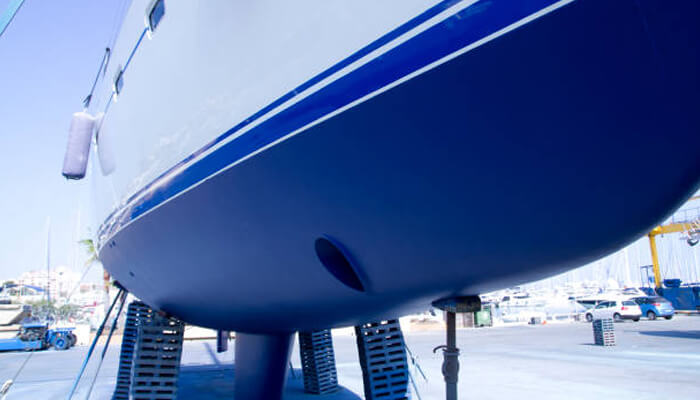Do you own a boat and love to spend your weekends out on the water? If yes, you might notice that over time, the hull of your boat gets covered in a layer of slimy, brownish-green muck known as fouling. This muck is, in fact, marine organisms, such as barnacles and algae, that attach themselves to the hull of his boat. Not only does the fouling look unappealing, but it also slows down your boat and increases drag and fuel consumption. If you’re wondering what to do about it, boat antifouling is the answer.
In this blog, we’ll help you with a lowdown on the most popular anti-fouling methods and tips
What is Boat Antifouling?
Boat antifouling refers to the process of applying a coating to the hull of a boat to prevent marine organisms from attaching themselves. This coating contains biocides that are released slowly over time to prevent the growth of marine organisms.
This process is helpful not just to keep your boat looking great and performing at its best. It also protects the environment. By preventing the attachment and growth of marine organisms on your boat’s hull, you can reduce the risk of spreading invasive species from one waterway to another.
Types & Methods of Boat Antifouling
There are several types of antifouling available, each with its unique benefits and drawbacks.
Hard Antifouling: This coating is made up of a hard, durable layer of paint that is designed to resist wear and tear. It’s ideal for boats that travel at higher speeds and are more likely to suffer from abrasion or impact damage.
Soft Antifouling: This coating uses a softer, more flexible layer of paint that is designed to release biocides over time to prevent the growth of marine organisms. Soft antifouling is typically recommended for boats that travel at slower speeds and are less likely to suffer from abrasion or impact damage.
Hybrid Antifouling: Hybrid antifouling combines the benefits of both hard and soft antifouling, offering good longevity and antifouling performance.
Copper-Based Antifouling: This involves applying a coating containing copper particles to the hull of the boat. The copper particles are toxic to marine organisms, preventing them from attaching to the surface. While effective, copper-based antifouling can have negative environmental impacts and may need to be reapplied frequently.
Copper-Free Antifouling: Copper-free antifouling uses alternative biocides to copper, reducing the environmental impact of antifouling.
Silicone Antifouling: This is a newer type of antifouling that uses a silicone-based coating that makes the hull slippery and prevents the growth of marine organisms. This type of antifouling is more expensive, but it is also more effective and longer-lasting than other types of antifouling.
Ultrasonic Antifouling: Ultrasonic antifouling uses high-frequency sound waves to disrupt the attachment and growth of marine organisms.
Which method of antifouling you’ll benefit from depends on factors such as the type of boat, the water conditions, and the intended use of the boat.
Boat Antifouling Best Practices
Here are some best practice tips for effective boat antifouling.
Choose the right antifouling paint
There are different types of antifouling paints available in the market. Choose a paint that suits your boat and the water environment in which it operates.
Proper surface preparation
Clean your boat hull thoroughly before applying antifouling paint. Remove all traces of the old paint, dirt, and debris that might cling on to the hull. Use a high-pressure washer, sandblasting, or chemical stripping to remove any old paint or growth. If the surface is clean and contaminant-free, the anti-fouling paint will stay on better and longer.
Use appropriate protective gear
Antifouling paints contain chemicals that can be harmful if they come in contact with the skin. Use gloves, masks, and protective clothing when applying the paint.
Apply the paint properly
Follow the manufacturer’s instructions when applying the antifouling paint. Apply the paint as evenly as possible. Generally, a minimum of two coats is recommended by manufacturers. In some cases, you can even apply a third protective coat.
Maintain your boat
Regularly clean and maintain your boat to prolong the effectiveness of the antifouling paint. Keep your boat clean and dry when not in use.
Dispose of antifouling waste properly
According to Affordable Antifoul Solutions, antifouling paints contain toxic chemicals that, if not disposed of properly, can contaminate the waterways and harm the environment. Therefore, always check with your local authorities for guidelines on how to dispose of waste.
As you can see, boat antifouling is a must if you want your boat to stay in top condition and perform optimally on the water for years. By following these simple guidelines, you can enjoy your hobby knowing that you have taken the necessary steps to protect your boat and the environment.



